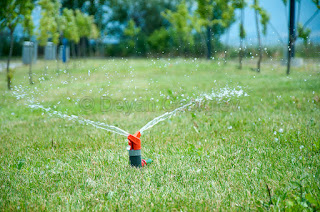The Beauty of Minimalist Interior Design: Less is More
In a world often saturated with sensory stimuli and clutter, the concept of minimalist interior design stands out as a breath of fresh air. Rooted in the principle of "less is more," minimalist design has gained popularity for its ability to create serene, functional, and visually appealing living spaces that embrace simplicity and essentialism.
Foundations of Minimalism
At its core, minimalist interior design is an artful balance of form, function, and aesthetics. It revolves around the idea of decluttering and eliminating unnecessary elements to create spaces that are clean, open, and soothing. The philosophy behind minimalism extends beyond visual appeal – it seeks to foster an environment that encourages mindfulness and tranquility.
Simplicity in Design Elements
The hallmark of minimalist design lies in its clean lines, neutral color palettes, and uncluttered spaces. Furniture pieces are often chosen for their timeless designs and functional aspects, emphasizing quality over quantity. Sleek, low-profile furnishings with simple geometric shapes take center stage, allowing for better flow and openness within the space.
Less Clutter, More Freedom
Minimalist interior design revolves around the principle of reducing clutter to create a sense of freedom and tranquility. This means carefully curating and organizing belongings, allowing only the essentials to occupy the space. This not only simplifies the visual landscape but also promotes a more organized and stress-free lifestyle.
The Power of Neutral Colors
Neutral color palettes are a hallmark of minimalist design. Whites, grays, blacks, and earth tones dominate the color scheme, creating a serene and cohesive look. These colors not only contribute to the overall calming atmosphere but also allow the eye to focus on the design's fundamental elements, such as architectural features and carefully selected furnishings. Functional Design with a Purpose
Minimalist interiors thrive on functionality. Every element within the space serves a purpose, and each piece of furniture or decor contributes to the overall aesthetic and practicality of the room. This design approach encourages thoughtful decisions about what to include in a space and what to omit, resulting in rooms that are both visually pleasing and highly efficient. Embracing Negative Space
Negative space, also known as whitespace, is a crucial aspect of minimalist house interior design. It refers to the empty areas within a room, whether it's an empty wall, a bare tabletop, or an unoccupied corner. Embracing negative space allows for a sense of balance, visual clarity, and a feeling of openness, enhancing the overall impact of the design. Minimalism Beyond Aesthetics
While minimalist design is often celebrated for its aesthetics, its impact goes deeper than surface beauty. By removing distractions and focusing on essential elements, minimalist interiors can have a positive influence on mental and emotional well-being. The uncluttered environment can lead to reduced stress, increased focus, and a greater sense of calm.
Personalizing Minimalist Spaces
Contrary to popular belief, minimalism doesn't mean sacrificing personal style. Instead, it encourages intentional choices that reflect individual tastes and preferences. While decor may be kept to a minimum, the pieces that are chosen often hold sentimental value or are carefully selected for their impact on the overall design.
Creating Your Minimalist Haven
Incorporating minimalist design principles into your home doesn't require a complete overhaul. It can start with small, deliberate changes – decluttering one room at a time, choosing furnishings that prioritize function, and embracing the elegance of simplicity. Gradually, as you adopt this design philosophy, you'll find your living spaces transformed into havens of tranquility and style.
In Conclusion
Minimalist interior design is more than just an aesthetic trend; it's a mindful approach to creating living spaces that prioritize simplicity, functionality, and visual harmony. By focusing on the essentials and embracing the power of negative space, minimalist design offers a respite from the chaos of modern life and invites you to experience the beauty of "less is more." Whether you're seeking a serene retreat or a practical living space, minimalism offers a timeless and enduring solution.
If you need construction services you can contact one of best architects in lahore.
Foundations of Minimalism
At its core, minimalist interior design is an artful balance of form, function, and aesthetics. It revolves around the idea of decluttering and eliminating unnecessary elements to create spaces that are clean, open, and soothing. The philosophy behind minimalism extends beyond visual appeal – it seeks to foster an environment that encourages mindfulness and tranquility.
Simplicity in Design Elements
The hallmark of minimalist design lies in its clean lines, neutral color palettes, and uncluttered spaces. Furniture pieces are often chosen for their timeless designs and functional aspects, emphasizing quality over quantity. Sleek, low-profile furnishings with simple geometric shapes take center stage, allowing for better flow and openness within the space.
Less Clutter, More Freedom
Minimalist interior design revolves around the principle of reducing clutter to create a sense of freedom and tranquility. This means carefully curating and organizing belongings, allowing only the essentials to occupy the space. This not only simplifies the visual landscape but also promotes a more organized and stress-free lifestyle.
The Power of Neutral Colors
Neutral color palettes are a hallmark of minimalist design. Whites, grays, blacks, and earth tones dominate the color scheme, creating a serene and cohesive look. These colors not only contribute to the overall calming atmosphere but also allow the eye to focus on the design's fundamental elements, such as architectural features and carefully selected furnishings. Functional Design with a Purpose
Minimalist interiors thrive on functionality. Every element within the space serves a purpose, and each piece of furniture or decor contributes to the overall aesthetic and practicality of the room. This design approach encourages thoughtful decisions about what to include in a space and what to omit, resulting in rooms that are both visually pleasing and highly efficient. Embracing Negative Space
Negative space, also known as whitespace, is a crucial aspect of minimalist house interior design. It refers to the empty areas within a room, whether it's an empty wall, a bare tabletop, or an unoccupied corner. Embracing negative space allows for a sense of balance, visual clarity, and a feeling of openness, enhancing the overall impact of the design. Minimalism Beyond Aesthetics
While minimalist design is often celebrated for its aesthetics, its impact goes deeper than surface beauty. By removing distractions and focusing on essential elements, minimalist interiors can have a positive influence on mental and emotional well-being. The uncluttered environment can lead to reduced stress, increased focus, and a greater sense of calm.
Personalizing Minimalist Spaces
Contrary to popular belief, minimalism doesn't mean sacrificing personal style. Instead, it encourages intentional choices that reflect individual tastes and preferences. While decor may be kept to a minimum, the pieces that are chosen often hold sentimental value or are carefully selected for their impact on the overall design.
Creating Your Minimalist Haven
Incorporating minimalist design principles into your home doesn't require a complete overhaul. It can start with small, deliberate changes – decluttering one room at a time, choosing furnishings that prioritize function, and embracing the elegance of simplicity. Gradually, as you adopt this design philosophy, you'll find your living spaces transformed into havens of tranquility and style.
In Conclusion
Minimalist interior design is more than just an aesthetic trend; it's a mindful approach to creating living spaces that prioritize simplicity, functionality, and visual harmony. By focusing on the essentials and embracing the power of negative space, minimalist design offers a respite from the chaos of modern life and invites you to experience the beauty of "less is more." Whether you're seeking a serene retreat or a practical living space, minimalism offers a timeless and enduring solution.
If you need construction services you can contact one of best architects in lahore.





Comments
Post a Comment